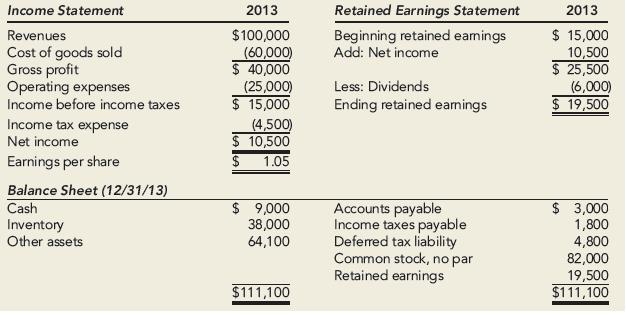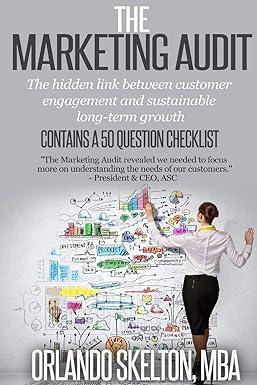Question
Koopman Company began operations on January 1, 2012, and uses the FIFO inventory method for financial reporting and the average cost inventory method for income
Koopman Company began operations on January 1, 2012, and uses the FIFO inventory method for financial reporting and the average cost inventory method for income taxes. At the beginning of 2014, Koopman decided to switch to the average cost inventory method for financial reporting. It had previously reported the following financial statement information for 2013:

An analysis of the accounting records discloses the following cost of goods sold under the FIFO and average cost inventory methods:

There are no indirect effects of the change in inventory method. Revenues for 2014 total $130,000; operating expenses for 2014 total $30,000. Koopman is subject to a 30% income tax rate in all years; it pays the income taxes payable of a current year in the first quarter of the next year. Koopman had 10,000 shares of common stock outstanding during all years; it paid dividends of $1 per share in 2014. At the end of 2014, Koopman had cash of $10,000, inventory of $24,000, other assets of $70,800, accounts payable of $4,500, and income taxes payable of $6,000. It desires to show financial statements for the current year and previous year in its 2014 annual report.
Question
Prepare the comparative balance sheets.
| Comparative Balance Sheets December 31 | 2014 | 2013 As adjusted |
| Asset |
|
|
| Cash | $ ????? | $ ????? |
| Inventory | $ ????? | $ ????? |
| Other Assets | $ ????? | $ ????? |
| Total Assets | $ ????? | $ 95,100 |
|
|
|
|
| Liabilities and Shareholders Equity |
|
|
| Accounts payable | $ ????? | $ ????? |
| Income taxes payable | $ ????? | $ ????? |
| Common stock, no par | $ ????? | $ ????? |
| Retained earnings | $ ????? | $ ????? |
| Total liabilities and shareholders Equity | $ 104,800 | $ ????? |
|
|
|
|
Step by Step Solution
There are 3 Steps involved in it
Step: 1

Get Instant Access to Expert-Tailored Solutions
See step-by-step solutions with expert insights and AI powered tools for academic success
Step: 2

Step: 3

Ace Your Homework with AI
Get the answers you need in no time with our AI-driven, step-by-step assistance
Get Started


